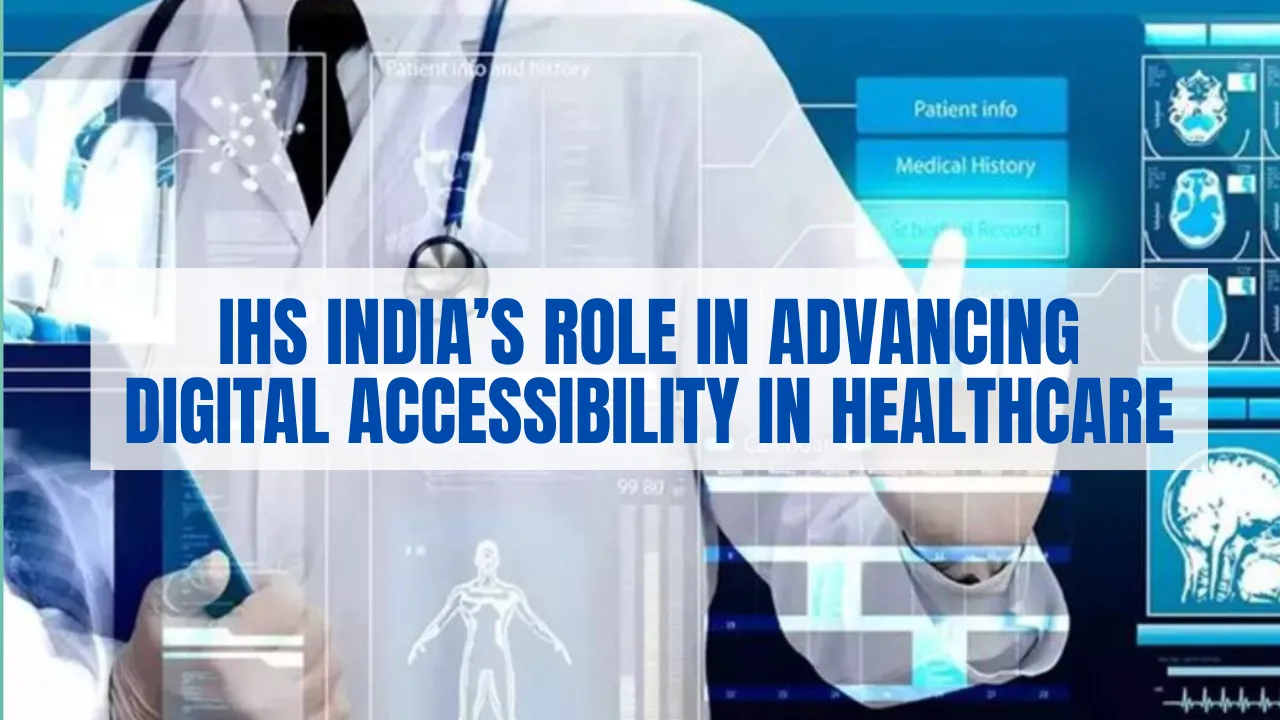IHS India is playing a pivotal role in reshaping the future of healthcare by focusing on making digital tools more inclusive and accessible. As the healthcare industry shifts toward technology-based services, ensuring that every individual—regardless of location, age, ability, or income—can benefit from these advancements is more important than ever. Digital transformation in healthcare has the potential to close long-standing gaps in access and quality, but only if it is designed with inclusivity in mind.
This article explores how IHS India is driving change through targeted digital health initiatives. From building user-friendly platforms and developing rural-friendly telemedicine systems to partnering with government agencies and prioritizing accessibility for persons with disabilities, this piece offers a thorough look at the organization’s impact. You’ll learn about their ongoing programs, their technological innovations, and their commitment to equitable healthcare through digital transformation.
IHS India and Its Vision for Digital Healthcare Access
At its core, IHS India believes that healthcare must be a right, not a privilege. With this vision, the organization has embedded digital health equity and accessibility into the DNA of every health tech solution it develops. By combining simplicity, scalability, and smart design, IHS India is not only making healthcare digital but ensuring that digital healthcare is truly universal. Their projects consistently aim to remove barriers for marginalized groups, including those in rural areas and those with limited literacy or disabilities.
| Key Focus Areas | IHS India Initiatives |
| Inclusive Design | Voice-based apps, large-font interfaces, local language support |
| Rural Accessibility | Offline-enabled telehealth, low-bandwidth tools, community outreach |
| Disability Inclusion | Screen reader compatibility, voice command features, assistive tech integration |
| Partnerships | Collaborations with public and private entities for scaling digital health solutions |
| Education & Literacy | Training programs for healthcare workers and patients on using digital tools |
Driving Inclusive Digital Health Platforms
IHS India is actively designing digital platforms that are simple to navigate and usable by everyone, regardless of their tech experience. The goal is to remove the intimidation factor that often comes with health apps or online portals. Using feedback from real users, they’ve refined their tools to focus on accessibility elements like clear visuals, natural language inputs, and minimalistic layouts.
By working with digital health inclusion experts and patient advocacy groups, the organization is constantly iterating on its products. These platforms allow users to book appointments, access lab results, track medication schedules, and even conduct video consultations with doctors—all within a few taps. This ensures that people with limited digital skills can still manage their health independently and effectively.
Bridging the Urban-Rural Digital Gap
The divide between urban and rural healthcare is a long-standing challenge in India. Recognizing this, IHS India has prioritized the creation of tools and services that specifically address the unique needs of rural communities. One major initiative is the development of telemedicine solutions that function with minimal internet bandwidth.
Instead of relying solely on smartphones or stable internet, IHS India is deploying mobile health platforms that work offline or via SMS. These systems make it possible for health workers in remote areas to gather patient data, conduct screenings, and even share medical advice through digital platforms without needing full connectivity. Such systems are a breakthrough in rural health access, enabling communities far from hospitals to still benefit from professional healthcare.
Key Initiatives Taken by IHS India
- Inclusive Design and Development:
All digital platforms are created with user accessibility at the forefront. This includes interface elements like easy navigation, text-to-speech capabilities, and multi-language support to cater to diverse populations. - Training and Digital Literacy Programs:
The organization doesn’t stop at building tech—it ensures people know how to use it. IHS India conducts workshops across India to train both healthcare professionals and patients on using apps, teleconsultation tools, and mobile health dashboards.
Collaboration with Government and Tech Partners
True transformation requires collaboration, and IHS India knows this well. By forming alliances with both government bodies and private sector technology firms, the organization has been able to roll out large-scale health tech accessibility projects. These partnerships help bridge the gap between innovation and implementation.
One notable partnership involves working with local health ministries to integrate IHS India’s tools into state-run health centers. These integrations allow public hospitals to offer teleconsultations, electronic medical records, and health tracking via digital devices, reaching underserved populations faster than traditional models.
Another strategic partnership is with Indian tech startups that specialize in AI and machine learning. These collaborations enable predictive diagnostics and real-time patient monitoring, pushing the envelope on how advanced yet accessible digital healthcare can be.
Focus on People with Disabilities
Accessibility isn’t just about rural access—it also includes designing for people with disabilities. IHS India takes a proactive approach here by involving people with visual, auditory, and motor disabilities in the development and testing phases of their tools. Their apps support screen readers, have high-contrast text modes, and feature voice-based controls for those who cannot easily use touchscreens.
IHS India also works with disability organizations to create awareness campaigns and distribute accessible health information. These efforts ensure that disabled individuals are not only included but empowered to manage their health independently through digital tools in healthcare.
Simplifying Medical Information
Health literacy is a key barrier to effective care, especially in a multilingual country like India. To tackle this, IHS India creates medical content that is simplified, localized, and often delivered through audio or video formats. These resources use plain language and culturally relevant imagery to ensure that people from different backgrounds understand their health conditions and treatment options.
This user-first approach not only improves comprehension but also builds trust in digital healthcare platforms. When patients understand what they are reading or hearing, they’re more likely to engage with the technology and follow medical advice.
Building Future-Ready Digital Tools
Looking ahead, IHS India is investing in technologies that will shape the next generation of digital healthcare. This includes AI-driven diagnostics that can be used in remote clinics, wearable devices that monitor vitals in real time, and smart dashboards for public health officials to track disease trends.
Their roadmap focuses on creating a health ecosystem where every person—whether in a metro city or a tribal village—can access high-quality care using intuitive and affordable digital platforms. By staying ahead of the curve and focusing on real-world usability, IHS India is building tools that aren’t just futuristic, but truly transformational.
FAQs
1. What makes IHS India’s digital platforms different from others?
IHS India designs its platforms with inclusivity as a priority, focusing on usability for people with low literacy, rural users, and those with disabilities.
2. How does IHS India improve healthcare in remote areas?
Through low-bandwidth telemedicine, mobile health platforms, and offline tools that connect patients in remote regions to doctors and health workers.
3. Are these digital tools usable for the elderly or tech-inexperienced users?
Yes. The tools are simplified with visual guidance, voice features, and regional languages, making them easy to use even for first-time tech users.
4. Does IHS India offer training for healthcare providers?
Absolutely. Regular training sessions are provided for medical staff and community health workers to ensure smooth digital adoption.
5. Is there any focus on patients with disabilities?
Yes, IHS India customizes its solutions with assistive technologies and gathers feedback from disabled communities to improve accessibility.
Final Thought
IHS India is not just adapting to the digital age—it is actively shaping it to be inclusive, fair, and far-reaching. By focusing on simplicity, accessibility, and user empowerment, the organization is bringing healthcare into the hands of everyone, not just the privileged few. Whether you live in a crowded city or a remote village, their goal is clear: make quality healthcare available and usable for all through innovative digital tools.
Curious about how digital technology can improve your health journey? Explore your digital health horoscope today or browse our other content on health tech breakthroughs. Don’t forget to share this article or leave a comment—we’d love to hear your thoughts on digital health access.







